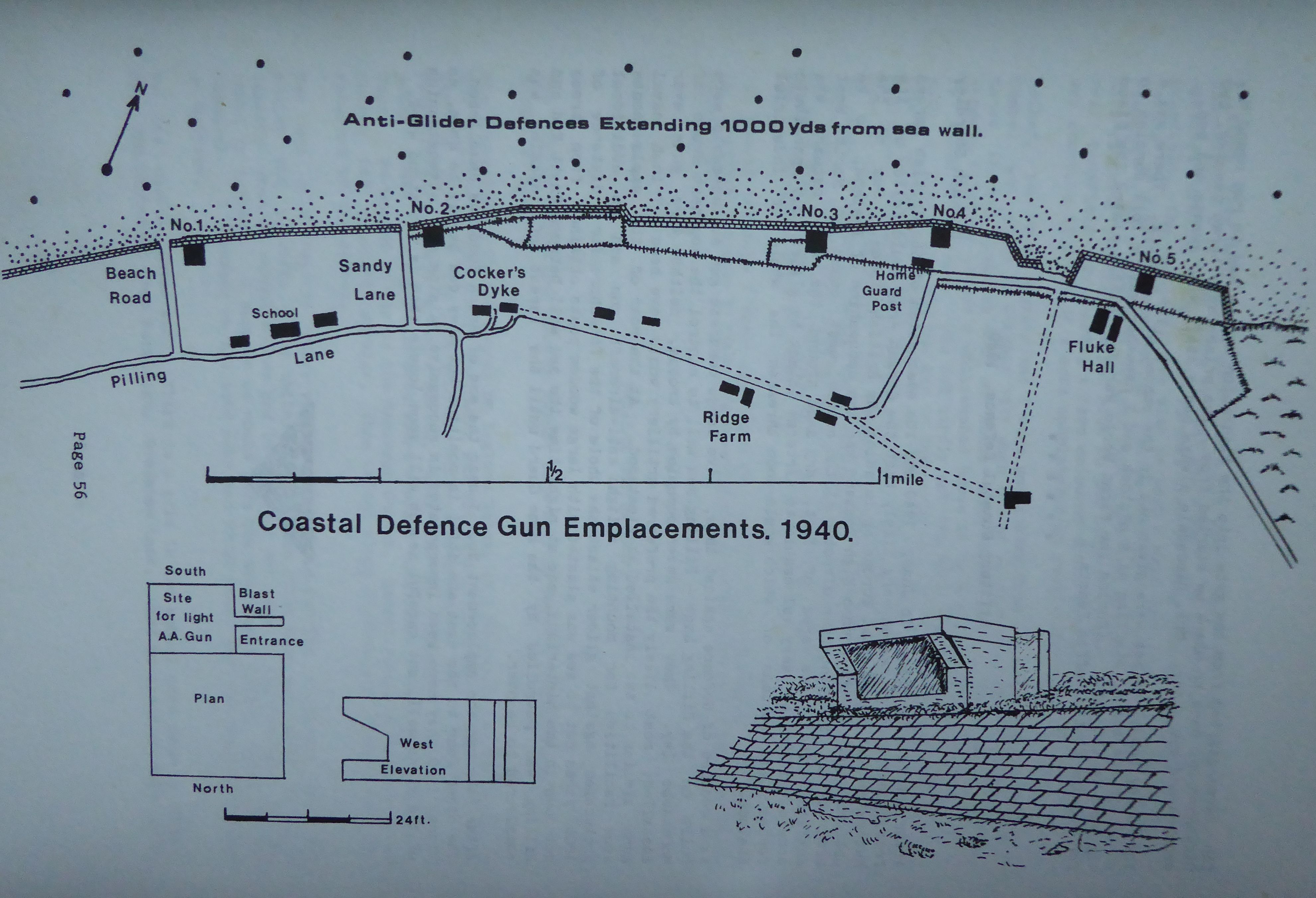Military Coastal Defence, 1940 by Hugh Sherdley
After the fall of France in June, 1940 and the evacuation of the British Forces from Dunkirk it appeared very likely that the German Army would follow up its successes on Continental Europe by invading the British Isles. One of the options open to the German High Command was the occupation of Ireland, used as an invasion base directed at the central west coast of North West England. The large area of flat, dry sand around the Lune estuary was considered to be very vulnerable to airborne attack by glider and parachute forces, the success of which would soon threaten the whole of industrial England.
As a measure of defence against this, five large concrete gun emplacements were built on the Pilling Lane - Pilling sea wall to control the southern shore of Morecambe Bay. They were never occupied by troops, neither were guts ever installed; most likely the preferred artillery would have been 4.7 inch naval guns similar to two installed at Fleetwood. At the rear of the emplacements were facilities for mounting a light anti-aircraft gun and as additional protection against glider attack the whole of the foreshore for a distance 1000 yards out to sea was planted with large wooden posts obtained from trees cut down in the hinterland, and at night time the sea wall between Knott End and Pilling was patrolled by the Home Guard until the threat of invasion was considered to be over.
After the war the emplacement No. 1 near the end of Beach Road was demolished. The other four to the east are still in position but they can barely be seen, as since 1960 they have been incorporated in successive raising and strengthening of the stone wall, but careful search will soon locate them in the stone work.

